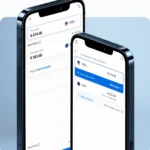Introducing Blockchain: The Future is Here
Blockchain technology is revolutionizing the digital world, promising to transform industries and businesses as we know them. Many people have heard of blockchain, but few understand what it is and how it works. This beginner’s guide will help you understand the basics of blockchain, its benefits and drawbacks, the different types of blockchains, and how to get started with blockchain technology.
===Understanding the Basics of Blockchain
At its simplest, a blockchain is a digital ledger that records transactions. It’s decentralized, meaning that there’s no need for a central authority or intermediary to validate transactions. Instead, the blockchain is maintained by a network of computers that work together to verify and record transactions. Each block in the chain contains a record of several transactions, and once a block is added to the chain, it cannot be altered.
===How Blockchain Works: A Simple Explanation
Let’s say you want to send some money to a friend. When you initiate the transaction, it’s broadcast to the network of computers in the blockchain. These computers, called nodes, validate the transaction and add it to a block. Once the block is full, it’s added to the chain and becomes part of the permanent ledger. Because each block is linked to the one before it, it’s virtually impossible to alter the data without being detected.
===Benefits and Drawbacks of Blockchain Technology
One of the biggest benefits of blockchain technology is its security. Because the data is decentralized and stored in multiple locations, it’s very difficult for hackers to breach the system. However, there are also some drawbacks. For example, because each transaction has to be validated by multiple nodes, the process can be slow and cumbersome. Additionally, because the system is decentralized, there’s no central authority to oversee or regulate it.
===The Different Types of Blockchains
There are several different types of blockchains, each with its own unique characteristics. Public blockchains, such as Bitcoin, are open to anyone and don’t require permission to participate. Private blockchains, on the other hand, are restricted to a specific group of users and require permission to participate. Hybrid blockchains combine aspects of both public and private blockchains.
===How to Get Started with Blockchain
If you’re interested in getting started with blockchain technology, there are a few things you can do. First, educate yourself about the technology and how it works. You can start by reading articles and books about blockchain. Next, look for blockchain events and conferences in your area. Attend these events to learn from experts in the field and network with other like-minded individuals.
===Blockchain Use Cases You Need to Know
Blockchain technology has a wide range of use cases, from financial transactions to healthcare to supply chain management. For example, blockchain can be used to securely store and share medical records, reducing the risk of data breaches. It can also be used to track the origin and movement of goods in supply chains, providing greater transparency and accountability.
===The Future of Blockchain: What to Expect
As blockchain technology continues to evolve, we can expect to see even more innovative applications and use cases. For example, blockchain could be used to create decentralized social networks, where users are in control of their own data. It could also be used to create decentralized marketplaces, where buyers and sellers can transact directly without the need for intermediaries. One thing is certain: blockchain technology is here to stay, and its impact on the world will only continue to grow.
Conclusion
Blockchain technology is a complex and rapidly evolving field, but it has the potential to revolutionize the way we do business and interact with each other online. Whether you’re an entrepreneur, investor, or simply curious about the technology, there’s never been a better time to learn about blockchain. With this beginner’s guide, you’re well on your way to understanding the basics of blockchain, its benefits and drawbacks, and how to get started with this exciting technology.







